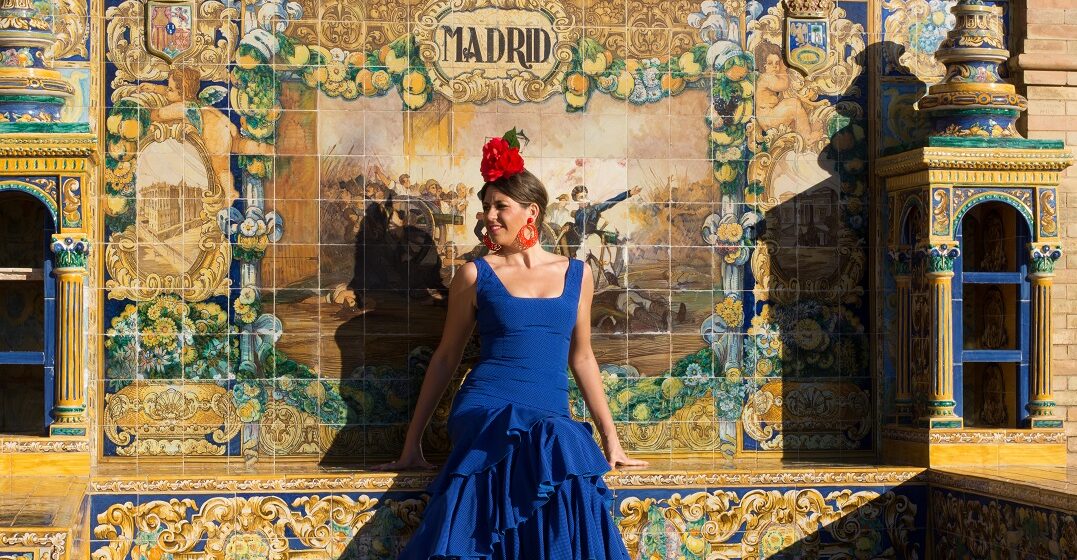Updated on October 16, 2024

All about the 17 autonomous communities of Spain

Spain is divided into 17 comunidades autónomas (autonomous communities), plus two autonomous cities. The autonomous communities of Spain are a reflection of the diversity, history and political development of the country. Most autonomous communities are composed of smaller areas, called provincias (provinces).
Understanding the culture and geographic location of these autonomous communities will help you grasp how Spain evolved its language and local customs. The monarchy, the Spanish Civil War and ancient traditions are just some of the influences that have shaped the establishment of Spain’s autonomous communities.
- A brief overview of the history and governance of Spain
- 1. Andalusia
- 2. Aragon
- 3. Asturias
- 4. Balearic Islands
- 5. Basque Country
- 6. Canary Islands
- 7. Cantabria
- 8. Castile and León
- 9. Castilla–La Mancha
- 10. Catalonia
- 11. Extremadura
- 12. Galicia
- 13. La Rioja
- 14. Madrid
- 15. Murcia
- 16. Navarre
- 17. Valencia
Learn languages at your pace
A brief overview of the history and governance of Spain
After a long period of dictatorship under General Francisco Franco, Spain became a constitutional monarchy in 1978.
The newly formed Spanish Constitution established both national and regional governance. Importantly, Article 2 of the Spanish Constitution declares the “right to autonomy of the nationalities and regions of which it is composed.”
Three regions — Catalonia, Basque Country and Galicia — were quickly recognized as “historic nationalities.” By 1983, 17 autonomous communities of Spain had been established.
Each of the autonomous communities of Spain has its own regional government. This government has jurisdiction over education, health, social services, public works, culture and language, along with other responsibilities.
1. Andalusia
The most populous and second largest of the Spanish autonomous regions, Andalusia is home to Spanish traditions like bullfighting and flamenco. Accents and dialects from this region are among the most distinct of the Iberian Peninsula.
- Population: 8.46 million
- Language: Andalusian Spanish
- Major cities: Seville, Córdoba, Málaga and Granada
2. Aragon
The capital city of Aragon, Zaragoza, is one of Spain’s oldest cities. It was established by the Romans in the first century BC.
- Population: 1.3 million
- Languages: Spanish, Aragonese, Catalan
- Major cities: Zaragoza, Huesca
3. Asturias
Together, the Monuments of Oviedo and the Kingdom of Asturias constitute a UNESCO World Heritage Site. There are also six UNESCO biosphere reserves in this mountainous region on Spain’s northern coast — a sign of its high level of biodiversity.
- Population: 1 million
- Languages: Spanish, Asturian
- Major cities: Gijón, Oviedo
4. Balearic Islands
The islands of this archipelago off the eastern coast of Spain are popular tourist destinations. But did you know that salsa mahonesa (mayonnaise) originated in Menorca?
- Population: 1.7 million
- Languages: Catalan, Spanish
- Major cities: Palma, Mallorca, Ibiza, Menorca
5. Basque Country
The Basque people can lay claim to possibly one of the oldest cultures in Europe. They even have genetic connections to early Neolithic farmers! It’s worth noting that the territory of the Basque Country spills and extends to southwestern France, where it’s subject to French laws.
- Population: 2.2 million
- Languages: Euskera, Spanish
- Major cities: Bilbao, Vitoria-Gasteiz, Álava, Biscay
Learn languages at your pace
6. Canary Islands
One of the seven main islands in the Canary Islands, Tenerife, is the site of the second-biggest Carnival celebration in the world. The Canary Islands archipelago is also the southernmost of the autonomous communities of Spain — strategically located between Europe, Africa and the Americas.
- Population: 2.17 million
- Languages: Spanish
- Major cities: Las Palmas, Santa Cruz de Tenerife
7. Cantabria
Antoni Gaudí built the famous cathedral in Barcelona, but Cantabria on Spain’s north coast has another fantastic Gaudí structure: El Capricho.
- Population: 582,905
- Languages: Spanish
- Major cities: Santander
8. Castile and León
Castile and León is the largest of the Spanish autonomous communities. Home to magnificent cathedrals including the Burgos Cathedral (a UNESCO World Heritage Site), this region is well worth a visit.
- Population: 2.39 million
- Languages: Spanish
- Major cities: Salamanca, Ávila, León, Palencia, Valladolid
9. Castilla-La Mancha
Castilla-La Mancha in central Spain is most famous for its fictional literary character, Don Quixote. Cheese lovers may also recognize it as the birthplace of manchego cheese (queso manchego).
- Population: 2 million
- Languages: Spanish
- Major cities: Toledo, Albacete, Ciudad Real
10. Catalonia
Catalonia has its own language, Catalan, with over eight million native speakers. They live in Catalonia, the Balearic Islands, Valencia, Aragon and the country of Andorra. Historically, many members of this community have shown an interest in (and engaged in political struggles for) Catalonian independence.
- Population: 7.7 million
- Languages: Catalan, Spanish, Occitan
- Major cities: Barcelona, Girona, Tarragona
11. Extremadura
You may know jamón ibérico (Iberian ham), but the very finest type is jamón de bellota 100% ibérico, which only comes from Extremadura.
- Population: 1.06 million
- Languages: Spanish
- Major cities: Mérida, Cáceres, Badajoz
12. Galicia
This northwestern region of Spain has its own language, Galego (or gallego), which is a lot closer to Portuguese than Spanish and has over 2.5 million native speakers.
- Population: 2.7 million
- Languages: Galician, Spanish
- Major cities: Vigo, A Coruña, Lugo, Ourense
Learn languages at your pace
13. La Rioja
While it’s the smallest region of Spain, La Rioja is home to over 600 wineries. Most of the 250 million liters of wine it produces each year are vino tinto (red wine).
- Population: 319,914
- Languages: Spanish
- Major cities: Logroño
14. Madrid
Madrid’s coat of arms includes a bear because the original name of the city was Ursaria — or “Land of Bears.”
- Population: 6.77 million
- Languages: Spanish
- Major cities: Madrid
15. Murcia
Murcia’s climate makes it perfect for agriculture. About 15% of all the vegetables in Europe and 30% of all the fruit in Spain are from Murcia.
- Population: 1.5 million
- Languages: Spanish
- Major cities: Murcia
16. Navarre
The annual festival of San Fermín in July includes the world-famous “Running of the Bulls” event, in which participants flee from a group of bulls as they run to the bullring.
- Population: 661,537
- Languages: Spanish, Basque
- Major cities: Pamplona
17. Valencia
Valencia is the birthplace of one of Spain’s most iconic dishes: paella. Paella valenciana was originally a humble meal prepared with saffron rice, tomatoes, onions, snails and beans. Meats such as rabbit and chicken were added only for special occasions.
- Population: 5.05 million
- Languages: Valencian, Spanish
- Major cities: Alicante, Castelló, Valencia
Diversity of the autonomous communities of Spain
The autonomous communities of Spain are diverse and rich in culture. With so much to learn, it’s no wonder why Spain is the second-most visited country in the world. Spain’s autonomous regions are also a product of a political and historical process that reflects this regional diversity.













